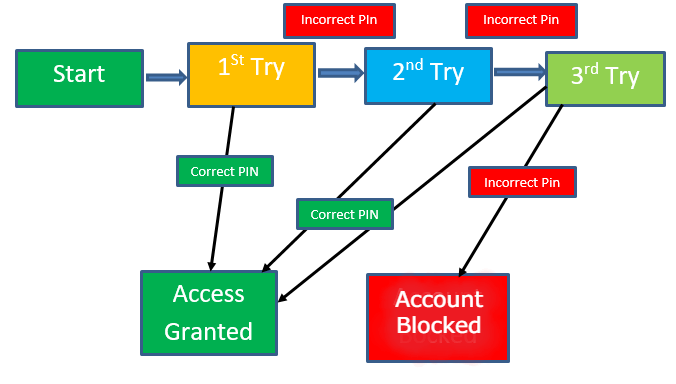What is state Transition Testing?
State transition testing is a type of software testing that focuses on the behavior of an application when transitioning from one state to another. It is used to verify that the application behaves as expected when transitioning between different states, such as when a user interacts with the application or when certain conditions are met. In this example, state transition testing would be used to verify that the user’s tweet is successfully posted and that the application responds appropriately.
When to use State transition?
State transition can be used to help understand how a person’s opinion of a movie changes over time. For example, if the same person tweeted again a few days later saying “I still love the new Batman movie!”, then state transition could be used to track the change in opinion from “loved” to “still love”.
When to Not Rely On State Transition?
State transition should not be relied on when the system is complex and requires a large number of states. It is also not suitable for systems that require frequent changes in state or require a large amount of data to be stored in each state. Additionally, state transition is not suitable for systems that require real-time responses or require a high degree of accuracy.
Four part of state transition Diagram
1.Initial State: Unseen
2. Transition 1: Seen
3. Transition 2: Liked
4. Final State: Tweeted
State transition Diagram and state transition table
State Transition Diagram:


How to make a state Transition (Example of a state Transition)
A state transition is a process of changing from one state to another.
Example:
Let’s say you have a light switch that can be in either the “on” or “off” position. When you flip the switch, it transitions from one state to the other.
In this example, the initial state is “off” and the final state is “on”. The transition occurs when you flip the switch, which causes the light to turn on.
Advantage and disadvantage of state transition technique
| Advantages: | Disadvantages: |
| 1.It allows you to express your opinion and share your enthusiasm for the movie with others. | 1.It can be seen as a form of advertising for the movie, which may not be welcomed by some people. |
| 2.It can lead to spoilers being shared, which can ruin the experience for others who haven’t seen the movie yet. | 2.It can lead to spoilers being shared, which can ruin the experience for others who haven’t seen the movie yet. |
| 3.It can help create a sense of community among fans of the movie. | 3It can lead to arguments and debates about the movie, which can be distracting and unproductive. |
Summary
- State Transition testing is defined as the testing technique in which changes in input conditions cause’s state changes in the Application under Test.
- In Software Engineering, State Transition Testing Technique is helpful where you need to test different system transitions.
- Two main ways to represent or design state transition, State transition diagram, and State transition table.
- In state transition diagram the states are shown in boxed texts, and the transition is represented by arrows.
- In state transition table all the states are listed on the left side, and the events are described on the top.
- This main advantage of this testing technique is that it will provide a pictorial or tabular representation of system behavior which will make the tester to cover and understand the system behavior efficiently.
- The main disadvantage of this testing technique is that we can’t rely in this technique every time.

